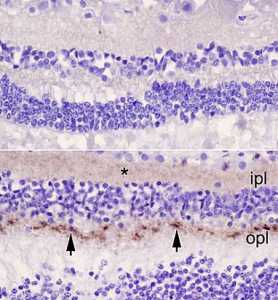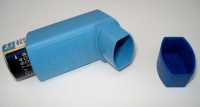Author Interviews, Hospital Acquired, Infections, Technology / 23.01.2019
Ultraviolet System Enhances Disinfection of Patient Equipment
MedicalResearch.com Interview with:
Donna Armellino RN, DNP, CIC
Vice President, Infection Prevention
Northwell Health, Infection Prevention
Lake Success, N. Y.
MedicalResearch.com: What is the background for this study?
Response: The background for initiating this study was to assess frequently used equipment within the patient care environment following standard manual cleaning and disinfection compared to disinfection with PurpleSun’s shadowless 90-second cycle focused multivector ultraviolet (FMUV) delivery system. Microbes exist within the environment. Cleaning followed by disinfection, regardless of method, is intended to decrease levels of these microbes to minimize exposure and the risk of infection.
To measure the effectiveness of the two methods of disinfection a five-point culturing method was used to assess microbial burden. This method was used to assess patient care equipment cleanliness after manual cleaning/disinfection and following the use of FMUV after an operative case and was used to sample equipment deemed cleaned/disinfected and ready for use outside the operative environment. Microbial burden was reported as colony forming units (CFUs). Comparison of the CFUs before cleaning/disinfection, after cleaning/disinfection, and after the use of FMUV allowed efficacy of the disinfection methods to be compared.
(more…)











![MedicalResearch.com Interview with: Gili Regev-Yochay, MD, Lead author Director of the Infection Prevention & Control Unit Sheba Medical Center Tel HaShomer, Israel. MedicalResearch.com: What is the background for this study? Response: CPE (Carbapenemase producing Enterobacteriaceae) is endemic in Israel. In our ICU we had a prolonged CPE outbreak with one particular bacteria, which is not that common (OXA-48 producing-Serratia marcescens). Enhancing our regular control measures (hand hygiene, increased cleaning etc..) did not contain the outbreak. MedicalResearch.com: What are the main findings? Response: The outbreak source were the sink-traps in nearly all the patient rooms, which were contaminated with this same bacteria. Once we understood that this was the source we took two measures: 1) Sink decontamination efforts, including intensive chlorine washes of the drainage and water system, replacement of all sink-traps, acetic acid treatment and more, all these efforts were only partially and only temporarily successful. So that even today, after a year of such efforts and a period in which we didn't have any patients with this infection, the drainage system is still contaminated with these bugs and they grow in the sink-traps and can be found in the sink outlets. 2) The second measure we took was an educational intervention, where we engaged the ICU team through workshops to the issue of the contaminated sinks and together enforced strict "sink-use guidelines" (sinks are to be used ONLY for hand washing, prohibiting placement of any materials near the sinks, etc.). Using these two measure the outbreak was fully contained. To date, nearly 1.5 years since the last outbreak case, we did not have any further infections in our ICU patients with this bug. MedicalResearch.com: What should readers take away from your report? Response: Sink-traps and drainage systems can be a major source of CPE transmission. While traditionally CPE outbreaks were attributed to patient-to patient transmission, the environment and particularly water and drainage system appears to play a major role. MedicalResearch.com: What recommendations do you have for future research as a result of this work? Response: There is urgent need to find a technological solution for drainage system contaminations. While some have suggested to get rid of sinks in ICU this is probably not realistic in the era of emerging Clostridium infections (where washing hands, and not only alcohol rubs are needed). Citation: Gili Regev-Yochay, Gill Smollan, Ilana Tal, Nani Pinas Zade, Yael Haviv, Valery Nudelman, Ohad Gal-Mor, Hanaa Jaber, Eyal Zimlichman, Nati Keller, Galia Rahav. Sink traps as the source of transmission of OXA-48–producing Serratia marcescens in an intensive care unit. Infection Control & Hospital Epidemiology, 2018; 1 DOI: 1017/ice.2018.235 [wysija_form id="3"] [last-modified] The information on MedicalResearch.com is provided for educational purposes only, and is in no way intended to diagnose, cure, or treat any medical or other condition. Always seek the advice of your physician or other qualified health and ask your doctor any questions you may have regarding a medical condition. In addition to all other limitations and disclaimers in this agreement, service provider and its third party providers disclaim any liability or loss in connection with the content provided on this website.](https://medicalresearch.com/wp-content/uploads/sink.jpg)
![MedicalResearch.com Interview with: Gili Regev-Yochay, MD, Lead author Director of the Infection Prevention & Control Unit Sheba Medical Center Tel HaShomer, Israel. MedicalResearch.com: What is the background for this study? Response: CPE (Carbapenemase producing Enterobacteriaceae) is endemic in Israel. In our ICU we had a prolonged CPE outbreak with one particular bacteria, which is not that common (OXA-48 producing-Serratia marcescens). Enhancing our regular control measures (hand hygiene, increased cleaning etc..) did not contain the outbreak. MedicalResearch.com: What are the main findings? Response: The outbreak source were the sink-traps in nearly all the patient rooms, which were contaminated with this same bacteria. Once we understood that this was the source we took two measures: 1) Sink decontamination efforts, including intensive chlorine washes of the drainage and water system, replacement of all sink-traps, acetic acid treatment and more, all these efforts were only partially and only temporarily successful. So that even today, after a year of such efforts and a period in which we didn't have any patients with this infection, the drainage system is still contaminated with these bugs and they grow in the sink-traps and can be found in the sink outlets. 2) The second measure we took was an educational intervention, where we engaged the ICU team through workshops to the issue of the contaminated sinks and together enforced strict "sink-use guidelines" (sinks are to be used ONLY for hand washing, prohibiting placement of any materials near the sinks, etc.). Using these two measure the outbreak was fully contained. To date, nearly 1.5 years since the last outbreak case, we did not have any further infections in our ICU patients with this bug. MedicalResearch.com: What should readers take away from your report? Response: Sink-traps and drainage systems can be a major source of CPE transmission. While traditionally CPE outbreaks were attributed to patient-to patient transmission, the environment and particularly water and drainage system appears to play a major role. MedicalResearch.com: What recommendations do you have for future research as a result of this work? Response: There is urgent need to find a technological solution for drainage system contaminations. While some have suggested to get rid of sinks in ICU this is probably not realistic in the era of emerging Clostridium infections (where washing hands, and not only alcohol rubs are needed). Citation: Gili Regev-Yochay, Gill Smollan, Ilana Tal, Nani Pinas Zade, Yael Haviv, Valery Nudelman, Ohad Gal-Mor, Hanaa Jaber, Eyal Zimlichman, Nati Keller, Galia Rahav. Sink traps as the source of transmission of OXA-48–producing Serratia marcescens in an intensive care unit. Infection Control & Hospital Epidemiology, 2018; 1 DOI: 1017/ice.2018.235 [wysija_form id="3"] [last-modified] The information on MedicalResearch.com is provided for educational purposes only, and is in no way intended to diagnose, cure, or treat any medical or other condition. Always seek the advice of your physician or other qualified health and ask your doctor any questions you may have regarding a medical condition. In addition to all other limitations and disclaimers in this agreement, service provider and its third party providers disclaim any liability or loss in connection with the content provided on this website.](https://medicalresearch.com/wp-content/uploads/sink-200x150.jpg)



















 Mícheál de Barra, PhD
Lecturer in Psychology
Brunel University London
MedicalResearch.com: What is the background for this study? What are the main findings?
Response: Disgust has been called the "intuitive microbiologist" - it tracks the sources of infection in our environment. But so far, there has been little attempt to link the sources of disgust to the sources of infectious disease in a comprehensive way. So we developed a method for developing stimuli based on a random sample illness.
We basically asked ourselves what the kinds of cues that might be associated with that kind of disease risk and asked people to rate disgust responses. The main motive for this was to contribute to a debate in the literature about if there are "kinds of disgust" and if so, how many. I results were a little ambiguous there I'm afraid.
Mícheál de Barra, PhD
Lecturer in Psychology
Brunel University London
MedicalResearch.com: What is the background for this study? What are the main findings?
Response: Disgust has been called the "intuitive microbiologist" - it tracks the sources of infection in our environment. But so far, there has been little attempt to link the sources of disgust to the sources of infectious disease in a comprehensive way. So we developed a method for developing stimuli based on a random sample illness.
We basically asked ourselves what the kinds of cues that might be associated with that kind of disease risk and asked people to rate disgust responses. The main motive for this was to contribute to a debate in the literature about if there are "kinds of disgust" and if so, how many. I results were a little ambiguous there I'm afraid.